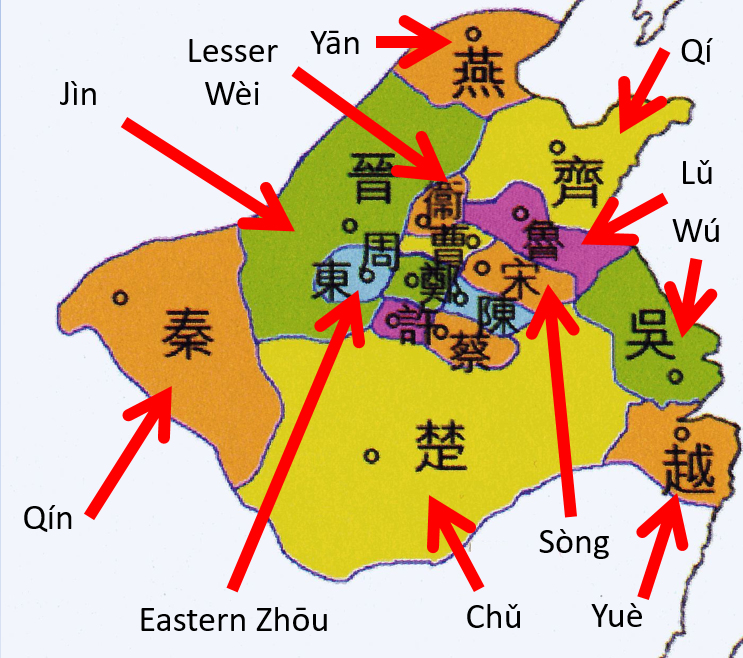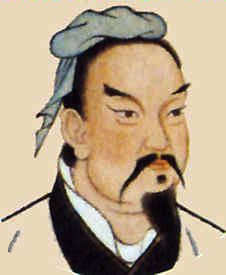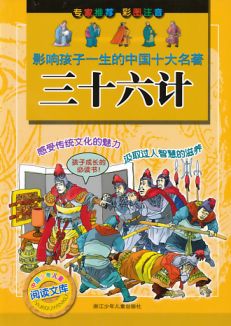
Content created: 130717
File last modified:
Go to next file,

SŪN Wǔ 孙武 was a native of the feudal state of Qí 齐 (roughly in modern Shāndōng 山东 province) in the late VIth century BC, during China’s Spring & Autumn Period (period 04d). (Click here for dissenting view.) He was famed for his brilliance in strategy and tactics, and history has accorded him the honorific suffix zǐ 子, “master,” so he was known as “Master Sūn” (Sūnzǐ 孙子).
Sūn Wǔ is believed to be the author of China’s most famous manual of military tactics and strategy, a work known to history as Master Sūn’s Art of War (Sūnzǐ Bīngfǎ 孙子兵法), or more briefly The Art of War.
 Some people think it was written specifically for King Hélú 阖庐 (= Hélǘ 阖闾), the monarch of the state of Wú 吴 (roughly in modern Jiāngsū 江苏 province, which stretches along the coast northward from Shànghǎi). In any case, Hélú seems to have read it and to have appointed Sūn Wǔ to run his wars, which was accomplished with great success as the coastal state of Wú expanded aggressively southwestward into the much larger state of Chǔ 楚. (It didn’t work in the long pull. Chǔ —essentially the lands lying along much of the Yangtze River basin— expanded to the coast, assimilating everything in its way, including Wú. Today the name Wú continues to refer to the dialects spoken in the lower Yangtze basin.)
Some people think it was written specifically for King Hélú 阖庐 (= Hélǘ 阖闾), the monarch of the state of Wú 吴 (roughly in modern Jiāngsū 江苏 province, which stretches along the coast northward from Shànghǎi). In any case, Hélú seems to have read it and to have appointed Sūn Wǔ to run his wars, which was accomplished with great success as the coastal state of Wú expanded aggressively southwestward into the much larger state of Chǔ 楚. (It didn’t work in the long pull. Chǔ —essentially the lands lying along much of the Yangtze River basin— expanded to the coast, assimilating everything in its way, including Wú. Today the name Wú continues to refer to the dialects spoken in the lower Yangtze basin.)
We know nothing of what Sūn Wǔ may have thought about Hélú’s imperialist goals. Sūn’s topic in this book is effective warfare, not political morality
Effective warfare was changing. In earlier times, wars —not counting low-level inter-village conflicts or skirmishes with nomadic border tribes— had involved scuffles between expensively equipped aristocrats and their wealthy retainers, essentially people able to afford the time and equipment to engage in the “sport” of killing each other on the battlefield. But by Master Sūn’s time, the use of metal weapons was becoming widespread, including iron weapons, which were both cheaper and stronger than bronze ones, and warfare could involve much larger armies bearing much more lethal weapons.
This change posed huge challenges. For example, how could one move and provision large groups of people, people recruited against their will and inclined to return home if they could escape? How does one pay for all this? What was the proper role for kings, who had been at least marginally competent leaders of earlier armies, but lacked the level of professional experience and expertise needed to coordinate the emerging warfare of Sūnzǐ’s era?.

We see Master Sūn advising that the decision to avoid or engage in a battle should be made by a general even if defies the order of the king. We see him stressing the high costs of warfare, and advising that it can easily bankrupt even the richest state if it should be prolonged. We see him advising that diplomacy is always better than warfare because it is cheaper and the results are more dependable. We see him concerned about retaining the loyalty of forcefully recruited troops (not always in ways a modern reader finds pleasant). And we see him insisting upon secrecy as the core of good military tactics, which requires that the troops have no idea why they are doing what they are ordered to do, and which leads him to argue that spies should be paid more. A lot more.
All of these issues are very modern. They derive from the sad evolution of warfare from the sport of squabbling kings to the fielding of gigantic armies and the wholesale butchering of populations. Arguably, Sūnzǐ’s book is the first truly modern manual of warfare. But earliest or not, it is clearly a window on military “best practices” in an era of political tumult. It is easy to read through them imagining them to be obvious. They were not obvious in Sūnzǐ’s time, and in actual military encounters today, they sometimes are not all that obvious either.

Chinese strategic thinking has long imagined that a closed repertoire of “strategies” can hold the secret to success in warfare (or commerce or other undertakings), and many works have been produced over the centuries with title words like cè 策, jì 计, or zhāo 着, all of which mean “strategems,” or fǎ 法, "methods." The picture at the right shows a 2007 children’s book entitled “The Thirty-Six Strategems.” (The number thirty-six in such titles implies “all possible” or “all known,” although the number of chapters usually does come to thirty-six.) The introduction to the children’s book shown here describes military strategy as a valued ancestral heritage of the Chinese people that children should master to be well socialized members of society.
Master Sūn’s The Art of War, the most famous of such strategic inventories, has enjoyed continuing popularity, both at home and in translations, and is often simplistically regarded in America as the “secret” of Chinese success in whatever Chinese happen at the time to be successful at. However, there is not much of a secret, for the underlying logic of Sūnzǐ’s general approach is not particularly abstruse:
Sūnzǐ’s formulations remain thought-provoking, and mindfulness of them has clearly benefitted many of his admirers.
Sūn Wǔ is easily confused with his colorful descendent, SŪN Bìn 孙膑, and some writers mix their two biographies together or attribute the Art of War to Sūn Bìn (who wrote his own Art of War, fragments of which were discovered in 1972).
Click here for famous ancient stories about both strategists.
Lionel Giles (1875-1958), whose translation of the Art of War is presented here, was the son of Herbert Giles (1845-1935), one of the most formidable Victorian translators of Chinese texts into English. But “Young Lionel,” far from living entirely in his father’s shadow, was an excellent and productive translator himself, and in 1936 was appointed to the post of Keeper of Oriental Printed Books and Manuscripts at the British Museum.
Among his other projects, Lionel Giles was probably the most learned and meticulous translator to date of Sūnzǐ’s Art of War, including in his 1910 version not only a new and careful translation of the text itself, but selective translations and paraphrases from the most famous Chinese commentaries on the text from across many centuries, as well. And he offered his own comments upon both the original and the commentaries, plus his own observations on parallels and contrasts with war as conducted in the West, from classical antiquity to modern times. His was, in other words, a very impressive work. (For present purposes, his notes are omitted or occasionally incorporated as bracketed insertions into the text itself.)
Translating The Art of War poses all of the problems that approaching other ancient Chinese texts does. Here are three of what computer programmers might call “known issues” in the text as we have it:
[The commentator] CÁO Gōng 曹公 thinks that “traitors in the enemy’s camp” are referred to. … But [the commentator] CHÉN Hào 陈皥 is more likely to be right in saying: “We must have favorable circumstances in general, not merely traitors to help us.” [The commentator] JIǍ Lín 贾林 says: “We must avail ourselves of wind and dry weather.”It is striking that three highly educated native speakers could interpret the same passage so differently. The first of these commentators lived at the end of the second century AD, the second in the 800s, the third sometime between 650 and 900. Although generally guided by the views of these and other earlier commentators, Giles is also informed by what makes military sense, and is willing to stand against them when their various interpretations seem incongruent with anything Sūnzǐ could plausibly have meant.
I do not propose to draw any inferences from these facts, beyond the general conclusion that Sun Tzu’s work cannot have come down to us in the shape in which it left his hands: Chap. VIII is obviously defective and probably out of place, while XI seems to contain matter that either has been added by a later hand or ought to appear elsewhere.
Despite the efforts of countless others who have produced English versions of this eternally popular text, Giles’ effort stands the test of time as consistently well informed, thoughtful, and carefully worded. Sūnzǐ continues to be well served by it. Both the Chinese text and Giles’ translation and commentaries are readily available on the Internet. A good printed version of Giles’ translation and notes, with all Chinese words (other than Sūnzǐ's name, oddly) converted to modern (but toneless) Pinyin spellings, is that of John Minford, mentioned above. Minford also published his own translation, listed among many others in his edition of Giles’ work.
Return to top.
Go to
first chapter